- Administrator
- Albums and Singles
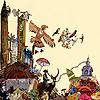 One of those albums that fits Load’s usual style, this is a disc of punk-damaged goofy thrash that obviously doesn’t take itself too seriously, and even through the cacophony some element of melody does rear its head through the muck.
One of those albums that fits Load’s usual style, this is a disc of punk-damaged goofy thrash that obviously doesn’t take itself too seriously, and even through the cacophony some element of melody does rear its head through the muck.
The tracks on Torture Footage stick to a rather similar formula that is this disc’s greatest shortcoming. With only two of the tracks clocking in at over three minutes, most consist of a blasting drum and distorted bass rhythm, with abused guitar banging and vocals that, for all their indecipherability, often propel a sense of melody in the songs. The overall sound is a sort of Dead Milkmen meets Lightening Bolt, without specifically sounding like either of the two bands.
Because of their short duration, the tracks never get into a point where repetition becomes a problem. The tracks are quick to adapt their structure and pacing and bounce back and forth between a couple similar, though different styles in each track. Tracks like “Air and Water” and “Priscilla’s Bleach Bath” stick to this basic noisy formula with some concessions to melody from the vocals. However, “I Am Ze Doctor” and “Trick Boots” are a bit less dense and more mellow than the others, even though I’m speaking only in relative terms. Any other band this would be a sloppy mess, but here, this is a bit of opium during the meth binge.
Perhaps it’s just a similar feeling to a Rorshach test, but some things begin to arise from the chaos, such as the rockabilly elements of “Hell is Ahead” and “Mini Harpyes” that are there amongst the noise, or at least that’s what I hear. The former’s sound, mixed with the dual male and female vocals bring it more to a bizarre world where the B-52’s are doing Napalm Death covers.
As I’ve alluded to, the biggest problem with this album are that, for all intents and purposes, it could be a single 30 minute track, because there is just such an element of sameness from track to track. It’s not an unheard of problem, and personally, I have problems sitting through full albums from the Ramones and early Swans for the same reasons. Picking a track or two here and there makes for better listening experience rather than trying to sit through the entire album at once, in which ones attention tends to wander. In short bursts, it’s a fun set of chaotic instrument abuse that mixes the noise and melody quite well.
samples:
Read More
- Administrator
- Albums and Singles
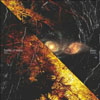 In his second release to date this year, Justin Broadrick has created something completely different from his previous two splits (with Eluvium and Envy), and two tracks that stand out as different in his entire discography. On the other half, Battle of Mice provide their own brand of emo-influenced post metal that simply doesn't seem to go well with the Jesu material (or vice versa).
In his second release to date this year, Justin Broadrick has created something completely different from his previous two splits (with Eluvium and Envy), and two tracks that stand out as different in his entire discography. On the other half, Battle of Mice provide their own brand of emo-influenced post metal that simply doesn't seem to go well with the Jesu material (or vice versa).
The two tracks from Jesu on here are as far away from the synth heavy post-punk influenced pieces that he created on both prior split releases. Instead of the complex heavily layered and multi-tracked material the project has become synonymous with, here it is stripped down, Spartan, and extremely subtle. “Clear Stream” is based entirely on plucked guitar notes, piano, and slow, simple drum programming. The vocals are heavily vocoded and low in the mix. This will probably satisfy those people who aren’t fond of Broadrick’s singing, which some criticize as being amateurish and detracting, but personally I have always enjoyed it, and I feel it usually meshes with the rest of the track well and wish it was a bit less effected on here.
“Falling From Grace” is similar, though somewhat more traditional Jesu with the more distorted riffs, but still moving along at a sluggish pace and dominated by piano in the mix. The vocals are more up front, but it still maintains the simpler arrangement of “Clear Stream.” As a whole, the feeling isn’t far removed from Earth’s recent (post-Hex) output in its pace and simplicity, but there is also a similar sound to the hidden track on the final Godflesh album Hymns, which was a teaser as to what Jesu would become.
The two contributions by Battle of Mice actually seem out of place next to the Jesu material, being much louder and aggressive in comparison. In general, I’m not a big fan of the unabashedly hard rock sound here, and the alternating over-enunciated female vocals mixed with emo screaming don’t inspire much for me. Both “The Bishop” and “Yellow and Black.” The latter fares a bit better with some more interesting atmospheric elements here and there, but again is overshadowed by the overly conventional metal riffing and emo vocals. While I admittedly am not usually a fan of female vocals, the two extremes presented here: overly feminine “soft” vocals and hysterical screaming have never worked for me, and I feel no different here.
As a whole, this just feels like an odd combination. Considering some of the most sparse, gentlest Jesu material is on here, putting it back to back with more metallic and aggressive Battle of Mice stuff just seems odd. The previous Jesu splits with Eluvium and Envy worked because they both showed the other band’s penchants for atmospherics and shoegaze influenced rock, respectively. Here it’s an odd combination that doesn’t seem to sit well. The Jesu material is different, but still great (though for this year I’m preferring the stuff on the Envy split) and Battle of Mice would probably sit better with someone who’s a bigger metal fan than I.
samples:
- Jesu - Clear Stream
- Jesu - Falling From Grace
- Battle of Mice - Yellow and Black
Read More
- Administrator
- Albums and Singles
 United Jnana presents a tasteful and well-executed digipak CD reissue of vintage Nurse With Wound material that hasn't been available in unaltered form since its original release on L.A.Y.L.A.H. Antirecords back in 1983.
United Jnana presents a tasteful and well-executed digipak CD reissue of vintage Nurse With Wound material that hasn't been available in unaltered form since its original release on L.A.Y.L.A.H. Antirecords back in 1983.
We've needed this for quite a while. Gyllensköld was a Nurse With Wound release that had never been particularly well-served by the early 1990s transition of the back catalog to CD. Instead of getting a straight CD reissue of the vinyl tracks, all fans had was the 1993 World Serpent disc entitled Large Ladies With Cake in the Oven, which contained the foreshortened, reworked versions of the tracks from the 1989 Gyllenskold/Brained LP along with a bunch of other odds and ends from various compilations and releases. All that seemed to unite the various pieces on Large Ladies was the fact that Clint Ruin AKA Jim Thirlwell/Foetus probably had a hand in most of the material included. Other than that, it was a largely illogical and annoying collection of mismatched odds and sods. That's why it's nice to have all of the original Gyllensköld vinyl back in print, in un-remixed versions. For completists, United Jnana has included the three reworked versions from Large Ladies as well, at the end of the CD so as not to disturb the original sequence. Now this is how it should be done.
This period in which Gyllensköld was recorded was a fantastic time for the evolution of Steven Stapleton's audio art. His collaborations with Diana Rogerson, Robert Haigh (Sema), David Tibet, and Thirlwell around this time elicited some of the most exciting work Nurse With Wound had yet recorded. Listen to this material and compare it to Chance Meeting and it becomes clear that in just a few years, Stapleton's art had grown by leaps and bounds. The production quality on these tracks is remarkable, and the widening out of the NWW soundworld opened up a whole new audio toybox that Stapleton has continued to experiment with up to today. This new sound encompasses vocal experiments, vintage LPs of easy listening music, demented nursery rhymes, lateral references to disposable pop music, avant-garde jazz and minimalistic piano composition, all glued together with evocative atmospheres redolent of things unholy, troubling and perverse, but always oddly indefinable and puzzlingly misshapen. In retrospect, Gyllensköld can be seen as the beginning of the "mature" period of NWW, and thus it is an indispensible release for fans of the project.
Perhaps influenced by the obsessions of his friend and collaborator Tibet, Stapleton also began weaving religious and occult references into his usual name-dropping of avant-garde artists and movements. The title of Gyllensköld was taken from an entry in dramatist August Strindberg's Occult Diary, a volume which represents either the record of a great writer's exploration of magic and mysticism, or the hallucinogenic scrawlings of a man in the grips of extreme paranoid psychosis, depending on your point of view. Similarly, NWW's Gyllensköld comes across at times as the soundtrack to a schizoid episode: disembodied voices intoning nonsense, floating subliminally across the stereo channels, or cackling in evil delight. The sounds are denser here than on earlier works such as Homotopy To Marie. Areas of silence are mostly gone, replaced by layers of drone, cartoonish noises and mutated voices. "Several Odd Moments Prior to Lunch" opens the brief album, setting the stage with its lysergically altered vocals and a frightening, yawning chasm of haunted, spectral sound. Stapleton, Thirlwell, and company learned how to wield the studio like an instrument on these and other recordings of the period. Effects such as reverb, delay, ring modulation and backwards tracking are utilized to create evolving textures and darkly psychedelic dreamspaces.
"Phenomenon of Aquarium and Bearded Lady" utilizes a number of instruments, including horns and piano, to create a bizarre dislocated funeral dirge in which the sounds of a slowly cycling jack-in-the-box are not out of place. For fans of musicians like Jacques Berrocal, who prefer their free jazz with a heavy dose of whacked-out eccentricity, this is about as good as it gets. "Dirty Fingernails" is something else entirely, a longform exploration of outré textures, combining mysterious trebly noises with percussive bleeps of mysterious origin. It all comes across like the soundtrack to an alechemical ritual performed by rickety Victorian-era cyborgs in an abandoned subway tunnel at the end of time. In other words, prime Nurse With Wound territory. The reworked versions tacked onto the end don't add anything special, and compare unfavorably to the originals, but it is nice that they are included. It's great to have this one back in print.
samples:
Read More
- Administrator
- Albums and Singles
 The seemingly endless Nurse With Wound reissue program continues unabated with this digitally remastered version of Homotopy To Marie, presented by United Jnana in a digipak with partially restored artwork and, oddly, the same augmented tracklist as the 1992 World Serpent CD version.
The seemingly endless Nurse With Wound reissue program continues unabated with this digitally remastered version of Homotopy To Marie, presented by United Jnana in a digipak with partially restored artwork and, oddly, the same augmented tracklist as the 1992 World Serpent CD version.
Part of the problem with a CD reissue program is figuring out how to balance the two requirements of the collectible reissue. First, that it be a faithful replica of the original LP or CD being reissued, complete with original artwork and unshuffled tracklist. Second, that it offer the consumer who already owns the original an extra incentive to repurchase: b-sides, bonus tracks, remixes, etc. United Jnana's reissue of Homotopy curiously fails to satisfy either requirement, and merely succeeds at putting back into print a slightly superior version of the World Serpent CD from the early 1990s. The problem? The inclusion of the track "Astral Dustbin Dirge," not included on the original United Dairies Homotopy LP. The track was included on the 1992 CD version of the album, perhaps as an incentive for owners of the LP. United Jnana choose to repeat this same augmented tracklisting, even though past NWW reissues had sought to iron out such oddities from the back catalog.
At the risk of disappearing into the endless, tail-swallowing nexus of nerdy, self-righteous record collector ire, I'd like to point out that the inclusion of "Astral Dustbin Dirge" on this reissue is particularly strange, given the fact that the track was already made available very recently on United Jnana's CD reissue of Drunk With the Old Man of the Mountains, on which it belongs, having been originally issued on that LP in 1987. Though the track was apparently recorded during the Homotopy sessions, it does not bear any particularly striking resemblance to the rest of the material on the album. If UJ had wanted to include the track, simply as a historical addendum, couldn't they have put it at the end after a gap of a few seconds, so as not to disturb the sequencing of the original LP? Questions like these exist without an answer, and while this certainly does not ruin the experience of Homotopy, the overall messiness of a well-intentioned reissue program does begin to annoy.
Nitpicking aside, however, one might be curious how Homotopy holds up almost three decades on. The interesting thing about listening to early and mid-period NWW albums now is how striking a contrast they provide to the last decade of Nurse With Wound's output, which has become both more eclectic, and for lack of a better word, safer. I was underwhelmed by the majority Huffin' Rag Blues, mostly because it seemed to lack the chaotic unpredictability and gloriously unhinged strangeness of vintage NWW, qualities which Homotopy possesses in abundance. The digital scrubbing received by these tracks, while it might have excised some of the weird amorphousness provided by old vinyl, mostly works in their favor. Inspired by avant-garde composer Franz Kamin, the tracks on Homotopy explore noises and the silences between them, afterimage and resonating echo. The opening track takes its inspiration equally both from ritualistic krautrock freakouts such as Can's "Aumgn," and the long tradition of purposely obtuse avant-garde techniques, vocal ululations and sighs combined with water drips, jarring noise of uncertain origin, and reverberating room tone. It's an uneasy negotiation that Stapleton, in his prime, was masterful at manipulating.
The title track utilizes the striking of metallic objects (gongs? sheet metal?) to highlight the full range of resonance in the afterimage of percussive sounds. In the mix are some typical Stapletonian dialogue samples of unknown origin, a little girl with an English accent saying: "I didn't know anybody and there was a funny smell." The notion of creating a homotopy (two topological functions that can be continuously deformed into one another) with sound is a unique one, and while I'm not sure that Stapleton ever succeeds at this goal, the conceptual framework lends an atmosphere of complexity to the album, as the listener searches for reflecting, homotopical similarities in its sound sculptures. "The Schmürz" is the longest and most dynamic track on the album. To the metallic resonances of the title track are added a repetitive, Steve Reich-esque sample of military men marching, run forwards and backwards and placed over top of each other in unpredictably askew fashion. Gradually, grating noise and surrealistic, atonal crypto-jazz plonkings are introduced, as well as samples from an old LP of liturgical music. This is the Nurse at its best, as far as I'm concerned: pure audio surrealism, avant-garde anti-music that is nonetheless fascinating, cryptic, suggestive, dreamlike and cinematic in the way it unfolds. Homotopy To Marie, in any form, is essential listening for any truly adventurous fan of esoteric audio.
samples:
- I Cannot Feel You as the Dogs Are Laughing and I Am Blind
- Homotopy To Marie
- The Schmürz (Unsullied By Suckling)
Read More
- Administrator
- Albums and Singles
Read More
- Administrator
- Albums and Singles
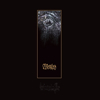 This inaugural release for the Chicago-based FSS label is some of the ripest and juiciest experimental black metal to be released this year. Wrnlrd raises a staff of high frequency fuzz graininess, and aims its assault sorcery at all who might attempt to lay claim to the throne of progressive dark music.
This inaugural release for the Chicago-based FSS label is some of the ripest and juiciest experimental black metal to be released this year. Wrnlrd raises a staff of high frequency fuzz graininess, and aims its assault sorcery at all who might attempt to lay claim to the throne of progressive dark music.
Oneiromantical War blasts in and swells with a classic black metal feel and a groove that barely punctures the surface of the wall of sound that is to last a majority of the next forty minutes. Free form scream and growl vocalizations emerge from the mix depending on where attention is at any given time. About a minute in I realize there will be more than enough to distract me on this dismal and desperate journey. “Silent Command” continues with a synth-choir aah preset interlude which is quickly plowed over by a drunken and stuttering metal core breakdown. The entire arrangement of the song mathematically flexes and breathes with itself. For more than a few moments I'm left alone with the static, reeling.
The centerpiece of this record is the 20 minute epic “War,” which begins with low detuned acoustic plucking. The music takes on a very woozy and narcotic feeling and relaxes the listener just enough to effectively stomp into another broken black metal groove. Half way through “War” turns ambient and expressive, showcasing undeinable ability at tying tracks together with simultaneiously soft and disturbing interludes. The ambience on this release is far more than accents that serve well their purpose. Without fail, the tune slowly regains its metal vigour over the remainder of the track.
Oneiromantical War is terribly impressive because of its ability to be totally brutal but retain a certain psychedelicism throughout. To say the ebb and flow of any of one its songs is stirring would be and understatement. “Breath of Doors” is both as stoned, sludgy and triumphant as the album gets at the start. Quickly enough the battle-cry stutters and releases; it then patiently builds to critical mass along a straight head-banging groove.
“Grave Gown” caps the record off with a suicidal black metal wash that is deceptively intricate. As with most of my favorite music, different and particularly deep buried layers become more and less apparent depending on where and what I was listening to the record on. FSS has released this digitally and on vinyl. That this entire record has this intricate and easily effected quality makes it unfortunate I was not able to contrast the sound of the digital release to its vinyl counterpart.
samples:
Read More
- Administrator
- Albums and Singles
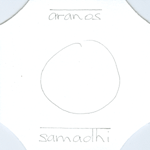 CD is 58 minutes 36 seconds long, comes in individually hand made cover.
CD is 58 minutes 36 seconds long, comes in individually hand made cover.
price is €12.- including postage.
Read More
- Administrator
- Albums and Singles
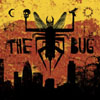 After years of brandishing sharp, abrasive electronic rhythms in tandem with Godflesh's Justin Broadrick as Techno Animal, Curse Of The Golden Vampire, and Ice, Kevin Martin rebooted this dormant one-off pseudonym as a logical outlet for his outstanding outsider dancehall productions, dripping with distortion and hot like fire. Stripped of the industrialized beats and roared deejay screeds of Pressure, his latest album under the moniker is, on the surface, perhaps in name only.
After years of brandishing sharp, abrasive electronic rhythms in tandem with Godflesh's Justin Broadrick as Techno Animal, Curse Of The Golden Vampire, and Ice, Kevin Martin rebooted this dormant one-off pseudonym as a logical outlet for his outstanding outsider dancehall productions, dripping with distortion and hot like fire. Stripped of the industrialized beats and roared deejay screeds of Pressure, his latest album under the moniker is, on the surface, perhaps in name only.
Nothing on London Zoo matches the sheer ferocity doled out on Martin's releases for Shockout, Klein, Tigerbeat6, and Rephlex, which include a double-disc collection of his Razor X material (in collaboration with The Rootsman) and an EP featuring fresh work with the feisty Warrior Queen bookending retooled versions of previously available tunes. Gone are mixes overdriven into the red and spearheaded by some of the baddest badmen on vocals. Obviously Martin hasn’t abandoned a passion for bassbin abuse, but clearly his appreciation for the austerity of the dubstep scene and a desire for authenticity among Jamaican producers softened his touch, in essence domesticating this once-poisonous insect into one fit to reside in a child’s ant farm.
Or so it would seem. Martin’s songcraft and radical messages remain undeniably intact and evident throughout this suspiciously quieter affair. Toning down the fuzz for London Zoo has not eroded the atmospheric menace of productions like “Warning” nor the ascetic instrumental “Freak Freak,” but rather has the effect of wrapping his bundles of post-millenial tension and anti-establishment angst in natty clothes just a few shades darker than indie pop successes M.I.A. or Santogold. Compared to the recent work from those two, Warrior Queen’s astute politicized verses on album highlights “Insane” and “Poison Dart” trump the former’s glamorized terrorist chic and the latter’s forced faux-hipster irreverence. Only Martin could bring out the bestial best from Spaceape, whose pseudo-intellectual dub poetry work with Kode9 on the decent Memories Of The Future sorely lacks the ardent insurgent soul he exudes here on “Fuckaz.”
While not as dithyrambic as dancehall veteran Daddy Freddy, who made the strongest appearances on Pressure, his peers Tippa Irie and Ricky Ranking show up and show strong some of the youngsters featured on later tracks. “Angry,” an opening salvo that rails against everything from global climate change to the American response to Hurricane Katrina, features a frustrated Tippa over a sparse riddim. Ricky Ranking laments the state of things further on “Murder We,” reminding us all that lines like “war is not the answer” are more than mere platitudes for weekend revolutionaries. Ultimately, so long as it remains a zealous project serving as a means to a noble end, The Bug can never be squashed, not even by a dramatic shift in creative direction.
samples:
Read More
- Administrator
- Albums and Singles
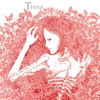 Given that the drone/doom supergroup Khanate has officially dissolved, there are a slew of similar artists aching to seize that slow, tar covered crown of grimy sludge metal, and Trees do a pretty good job of imitating the aforementioned artists. The problem is, does the world really need more of a style that shamelessly goes nowhere?
Given that the drone/doom supergroup Khanate has officially dissolved, there are a slew of similar artists aching to seize that slow, tar covered crown of grimy sludge metal, and Trees do a pretty good job of imitating the aforementioned artists. The problem is, does the world really need more of a style that shamelessly goes nowhere?
Khanate did pioneer that slow motion, long sustaining chords mixed with drum outbursts and inhuman shrieks at fractional BPM rates. However, under the nuanced eyes of James Plotkin and Stephen O’Malley, there was enough postproduction tweaking and filtering to give the admittedly simplistic sound a greater, more captivating depth. Trees, however, sound more like a live take on this kind of music, stripping away the studio wizardry and just leaving the conventional elements.
The problem with this is, stripped down the basics are only interesting for so long. Even Sunn O))) finally realized they had to do more than just let power chords sustain for an hour to make an interesting record. Here, there are two side-long tracks of that basic formula, which does retain some of the qualities of Khanate, but the music is more barren, the vocals feel more theatrical metal as opposed to Alan Dubin’s unearthly cries, and the entire proceedings feel like a pure imitation or cover band that nails the major points, but doesn’t pick up the subtleties that are necessary to transition from a spectacle to an actual enjoyable listening experience.
Hell, even the “big boys” in this genre can honestly be hard to sit through in the long term. It’s the type of music I need to be in a specific mood to enjoy, and thus never makes my frequent rotation playlist. I’m sure those who are more devoted to this genre could tear me apart on what the differences are, but for the average listener, those differences are too minute to worry about.
Trees have made a competent drone/sludge/doom album for sure, but there is just too little to cause it to stick out among the other similar projects on the map. People who are more than happy to just hear more of the slow motion head banging and black metal screams will definitely appreciate this, but for the rest of us, it’s just not that notable.
samples:
Read More
- Administrator
- Albums and Singles
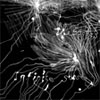 As a collaboration between Telescopes founder/consistent member Stephen Lawrie and Vibracathedral Orchestra's Bridget Hayden, it bares little direct resemblance to the former's past work in rock oriented shoegaze and the latter's drone soundscapes. Instead it is a chaotic noise infused work that could shred the speakers with the best of them. Closer inspection, however, reveals that at the core, both artists show their pedigree, and that's what sets this apart from other similar records.
As a collaboration between Telescopes founder/consistent member Stephen Lawrie and Vibracathedral Orchestra's Bridget Hayden, it bares little direct resemblance to the former's past work in rock oriented shoegaze and the latter's drone soundscapes. Instead it is a chaotic noise infused work that could shred the speakers with the best of them. Closer inspection, however, reveals that at the core, both artists show their pedigree, and that's what sets this apart from other similar records.
Recorded in a room supposedly used by a psychic medium, the sessions were specifically recorded via environmental microphones, with the volumes set to the max. Undoubtedly this is what gives the record its raw distortion that, due to its dynamic noise quality that simply cannot be created via digital technology. While this sheen of noise covers almost every track, it doesn’t fully obscure the underlying performance and instrumentation. The opening track, "Static Charge," features a clatter that could be a metal shop, but is more likely a guitar track that has been amplified to the point of full distortion. It has a rhythmic sense to it (something many projects this close to the noise spectrum seem to forget), but is obviously due to playing, not looping. As the track wears on the gain is turned up to the point that full clipping is achieved, as sound starts getting cut out from the mix.
In some situations the noise is the dominant theme: “Thought Loops” starts out a bit less aggressive, but by the middle what sounds like a buzzsaw cuts into the mix and demands attention, and the track only becomes more harsh and chaotic from there. The closing “Chrome Gulls” also follows on this path to harsh noise-dom, with its unadulterated feedback and metallic high end ringing, which even though it has a more tense vibe than any other piece on here, eventually gives way to some treated, vast ambience at the end.
Others are less apt to focus on the noise and more on the underlying melodies that are obfuscated amongst the grime. “Northumberland” opens on a more melodic note and some melody is immediately apparent, even if the sound is that of a string quartet playing in the deepest depths of hell. “Tidal Bandwidth” is another track that is based around oversaturated tape recordings, but there’s a deeper, almost synth like pulse that gives a more melodic propensity.
A difficult album to pin down, because it does feature elements of dissonance, but those are equally met by subtle melodic parts that could be easily ignored. For all its harshness, it is a complex album that is worth exploring the layers of.
samples:
Read More
- Administrator
- Albums and Singles
 Methadrone is New Jersey-based Craig Pillard, and Sterility is his third album recorded under that name. Sterility brings us eight exquisite examples of the grungy and oppressive bass-heavy dronescapes, augmented by acoustic guitar and vocal elements, that Pillard has made the trademark of Methadrone. Never has doom and darkess been encapsulated so appealingly.
Methadrone is New Jersey-based Craig Pillard, and Sterility is his third album recorded under that name. Sterility brings us eight exquisite examples of the grungy and oppressive bass-heavy dronescapes, augmented by acoustic guitar and vocal elements, that Pillard has made the trademark of Methadrone. Never has doom and darkess been encapsulated so appealingly.
The name Methadrone has been lurking around the periphery of my awareness for quite some while now, but this is the first time I have encountered their music. Being naturally attracted to the darker, dronier, ambient end of the spectrum, this shoehorns itself quite easily into that category, and appeals to me on so many levels. The music is anything but sterile. For starters, there’s the inherent simplicity: it’s not complex music when broken down into its constituent parts, but in combination equals something deep and shiver-inducing. Indeed, I would even go so far as to characterize this as symphonic, and like any good symphony, has an innate power to move. In addition, this symphonic character transcends the usual stereotypical cod-classical that pervades the doom metal regions and displays a maturity, emotionally and musically, that elevates it above that norm. The use of acoustic guitar, along with the vocals of David Galas on two tracks and Pillard’s own voice on track six, paints a picture of an exotic creature, startling yet dangerously beautiful.
Album opener and title track “Sterility” is a perfect exemplar of how Pillard creates that distinctive ambience. Essentially composed of just a few layers, a drone backing running beneath a synthetic choir weaving its voice around a weft of alternating bass and bright treble guitar chords, the dense sedimentary nature of the piece nevertheless amplifies the power inherent in each layer. This signature can also be found in “Cominium of Desire” and “Horizone.” The former is probably the nearest this album offers to a conventional song, with darkwave singer David Galas’ treated voice lending a plaintive unearthly dimension. “Horizone,” aside from being my favorite track, transfixes the heaviest elements of slow-doom and melancholic romanticism into a tapestry depicting the twilight of the gods. A downtempo eight-minute epic mixing those ubiquitous acoustic chords, electronic voices, bass percussion and Pillard’s wordless voicings, this has elements of Robin Guthrie’s work for Cocteau Twins threading its influences around the entire piece. It’s a slow-dying heartbeat, waiting for the darkness to finally overwhelm the consciousness.
The one track that seems to be slightly out of place, at least for me, is the 16-minute closer. This departs from the normal run of things, and comes perilously close to being a true instrumental in the way most would recognise it. Simultaneously it’s undeniably a Methadrone track for all its difference of approach. Electric guitar takes centre-stage on this one, with some discernible riffage readily apparent from the very start. Slow-beat drums pin everything into place, while some high-flying guitar soars stratospherically above the dense drone background. However, as different in its way as it is from the rest of the album, it is still an inseparable part of the constitution of Sterility.
It's hard for me not to wax enthusiastic about this one. For me, this has all the elements necessary to appeal on every level, and to elevate it above the everyday. It is exquisite, expansive, erudite, and just stunningly beautiful. For me that’s all I need.
Samples:
Read More

